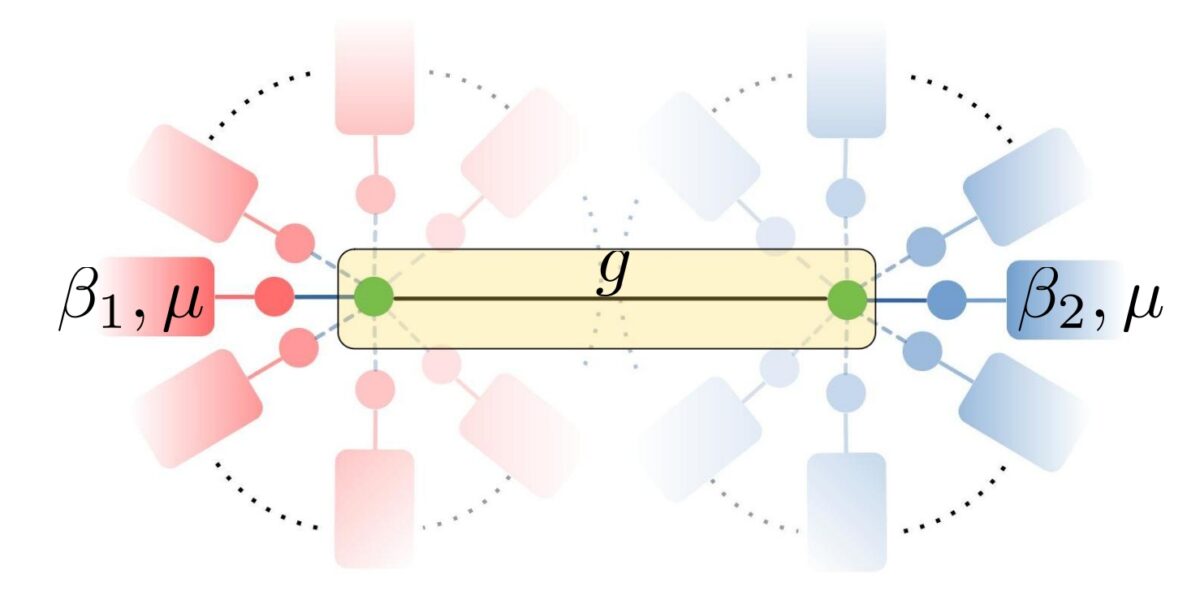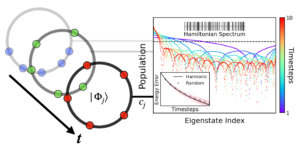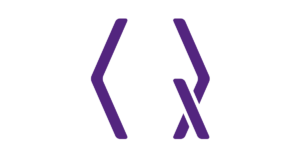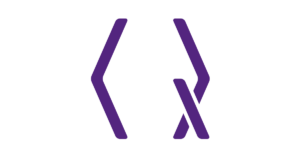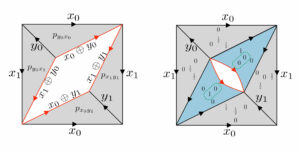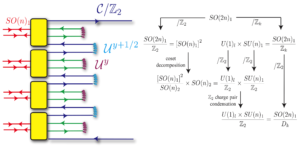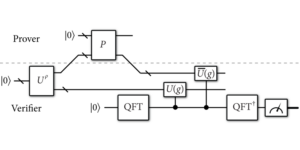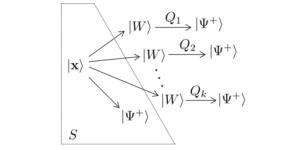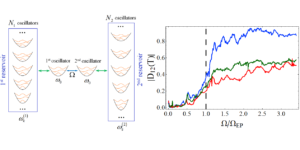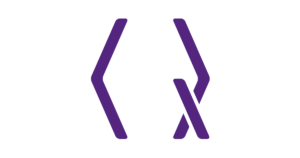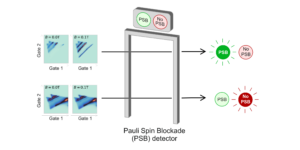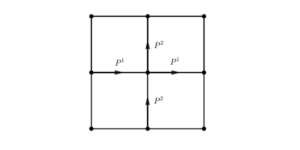1School of Physics, Trinity College Dublin, College Green, Dublin 2, Ireland
2Centre for complex quantum systems, Aarhus University, Nordre Ringgade 1, 8000 Aarhus C, Denmark
3Dahlem Center for Complex Quantum Systems, Freie Universit at Berlin, 14195 Berlin, Germany
4School of Physics, University College Dublin, Belfield, Dublin 4, Ireland
5Centre for Quantum Engineering, Science, and Technology, University College Dublin, Belfield, Dublin 4, Ireland
6Departamento de Física, Universidad de Murcia, Murcia E-30071, Spain
Find this paper interesting or want to discuss? Scite or leave a comment on SciRate.
Abstract
We introduce unique class of cyclic quantum thermal machines (QTMs) which can maximize their performance at the finite value of cycle duration $tau$ where they are most irreversible. These QTMs are based on single-stroke thermodynamic cycles realized by the non-equilibrium steady state (NESS) of the so-called Periodically Refreshed Baths (PReB) process. We find that such QTMs can interpolate between standard collisional QTMs, which consider repeated interactions with single-site environments, and autonomous QTMs operated by simultaneous coupling to multiple macroscopic baths. We discuss the physical realization of such processes and show that their implementation requires a finite number of copies of the baths. Interestingly, maximizing performance by operating in the most irreversible point as a function of $tau$ comes at the cost of increasing the complexity of realizing such a regime, the latter quantified by the increase in the number of copies of baths required. We demonstrate this physics considering a simple example. We also introduce an elegant description of the PReB process for Gaussian systems in terms of a discrete-time Lyapunov equation. Further, our analysis also reveals interesting connections with Zeno and anti-Zeno effects.
Featured image: A simple periodically refreshed quantum thermal machine. It consists of two fermionic sites with hopping $g$ between them, each site having its own set of baths, which couple one-by-one for a time $tau$ in a cyclic fashion. Here each bath is described by a single dissipative fermionic site. The dissipation 'refreshes' each bath to its equilibrium state before it is re-coupled to the system. The temperatures of the equilibrium states of the set of baths attached to the two sites are different (inverse temperatures, $beta_1$ and $beta_2$), while the chemical potentials ($mu$) are same.
Popular summary
Based on microscopic quantum systems, we propose a new type of thermodynamic cycle that can be most efficient when dissipation is maximized as a function of cycle duration. Consequently, as a function of cycle duration, there is no trade-off between power and efficiency. We call heat engines and refrigerators based on this thermodynamic cycle "periodically refreshed quantum thermal machines." Unlike traditional thermal machines, the system does not return to an equilibrium state at the end of each cycle, but rather to a far-from-equilibrium state. We discuss how such a process could be physically realized. The nature of the cycle makes the system's dynamics and thermodynamics amenable to exact numerical treatment within existing microscopic approaches to quantum thermodynamics. In particular, for Gaussian systems, we find an elegant description in terms of a discrete-time Lyapunov equation: a well-studied equation in mathematics and engineering that is used in everyday life for control of macroscopic objects. "Periodically refreshed quantum thermal machines" combine several concepts, demonstrating deep connections with the physics of repeated interaction or collisional models, thermoelectric devices, and quantum Zeno and anti-Zeno effects.
► BibTeX data
► References
[1] H. S. Leff and G. L. Jones, American Journal of Physics 43, 973 (1975).
https://doi.org/10.1119/1.10032
[2] H. S. Leff, American Journal of Physics 86, 344 (2018).
https://doi.org/10.1119/1.5020985
[3] S. Bhattacharjee and A. Dutta, The European Physical Journal B 94, 239 (2021).
https://doi.org/10.1140/epjb/s10051-021-00235-3
[4] N. M. Myers, O. Abah, and S. Deffner, (2022), arXiv:2201.01740 [quant-ph].
https://doi.org/10.1119/1.10032
arXiv:2201.01740
[5] A. Purkayastha, G. Guarnieri, S. Campbell, J. Prior, and J. Goold, Phys. Rev. B 104, 045417 (2021).
https://doi.org/10.1103/PhysRevB.104.045417
[6] H.-P. Breuer and F. Petruccione, The Theory of Open Quantum Systems (Oxford University Press, Oxford, 2007).
https://doi.org/10.1093/acprof:oso/9780199213900.001.0001
[7] H. Haug and A.-P. Jauho, Quantum Kinetics in Transport and Optics of Semiconductors (Springer-Verlag Berlin Heidelberg, 2008).
https://doi.org/10.1007/978-3-540-73564-9
[8] A. Kamenev, Field Theory of Non-Equilibrium Systems (Cambridge University Press, Cambridge, 2011).
https://doi.org/10.1017/CBO9781139003667
[9] J. Rau, Phys. Rev. 129, 1880 (1963).
https://doi.org/10.1103/PhysRev.129.1880
[10] S. Campbell and B. Vacchini, EPL (Europhysics Letters) 133, 60001 (2021).
https://doi.org/10.1209/0295-5075/133/60001
[11] F. Ciccarello, S. Lorenzo, V. Giovannetti, and G. M. Palma, Physics Reports 954, 1 (2022).
https://doi.org/10.1016/j.physrep.2022.01.001
[12] M. Cattaneo, G. De Chiara, S. Maniscalco, R. Zambrini, and G. L. Giorgi, Phys. Rev. Lett. 126, 130403 (2021).
https://doi.org/10.1103/PhysRevLett.126.130403
[13] P. Strasberg, G. Schaller, T. Brandes, and M. Esposito, Phys. Rev. X 7, 021003 (2017).
https://doi.org/10.1103/PhysRevX.7.021003
[14] P. Strasberg, Phys. Rev. Lett. 123, 180604 (2019).
https://doi.org/10.1103/PhysRevLett.123.180604
[15] G. D. Chiara, G. Landi, A. Hewgill, B. Reid, A. Ferraro, A. J. Roncaglia, and M. Antezza, New Journal of Physics 20, 113024 (2018).
https://doi.org/10.1088/1367-2630/aaecee
[16] G. Guarnieri, D. Morrone, B. Çakmak, F. Plastina, and S. Campbell, Physics Letters A 384, 126576 (2020).
https://doi.org/10.1016/j.physleta.2020.126576
[17] F. Barra, Sci. Rep. 5, 14873 (2015).
https://doi.org/10.1038/srep14873
[18] M. T. Mitchison, Contemporary Physics 60, 164 (2019).
https://doi.org/10.1080/00107514.2019.1631555
[19] G. Benenti, G. Casati, K. Saito, and R. S. Whitney, Physics Reports 694, 1 (2017).
https://doi.org/10.1016/j.physrep.2017.05.008
[20] Z. Gajić and M. T. J. Qureshi, Lyapunov matrix equation in system stability and control (Academic Press, Inc. San Diego, California, 1995).
[21] J. Sun and J. Yong, Stochastic linear-quadratic optimal control theory: Open-loop and closed-loop solutions (Springer Nature, Switzerland, 2020).
https://doi.org/10.1007/978-3-030-20922-3
[22] R. Dann and R. Kosloff, Quantum 5, 590 (2021a).
https://doi.org/10.22331/q-2021-11-25-590
[23] R. Dann and R. Kosloff, Phys. Rev. Research 3, 023006 (2021b).
https://doi.org/10.1103/PhysRevResearch.3.023006
[24] M. Esposito, M. A. Ochoa, and M. Galperin, Phys. Rev. Lett. 114, 080602 (2015a).
https://doi.org/10.1103/PhysRevLett.114.080602
[25] M. Esposito, M. A. Ochoa, and M. Galperin, Phys. Rev. B 92, 235440 (2015b).
https://doi.org/10.1103/PhysRevB.92.235440
[26] D. Newman, F. Mintert, and A. Nazir, Phys. Rev. E 95, 032139 (2017).
https://doi.org/10.1103/PhysRevE.95.032139
[27] S. Restrepo, J. Cerrillo, P. Strasberg, and G. Schaller, New Journal of Physics 20, 053063 (2018).
https://doi.org/10.1088/1367-2630/aac583
[28] M. Perarnau-Llobet, H. Wilming, A. Riera, R. Gallego, and J. Eisert, Phys. Rev. Lett. 120, 120602 (2018).
https://doi.org/10.1103/PhysRevLett.120.120602
[29] G. Schaller, J. Cerrillo, G. Engelhardt, and P. Strasberg, Phys. Rev. B 97, 195104 (2018).
https://doi.org/10.1103/PhysRevB.97.195104
[30] N. Pancotti, M. Scandi, M. T. Mitchison, and M. Perarnau-Llobet, Phys. Rev. X 10, 031015 (2020).
https://doi.org/10.1103/PhysRevX.10.031015
[31] M. Carrega, L. M. Cangemi, G. De Filippis, V. Cataudella, G. Benenti, and M. Sassetti, PRX Quantum 3, 010323 (2022).
https://doi.org/10.1103/PRXQuantum.3.010323
[32] B. Misra and E. C. G. Sudarshan, Journal of Mathematical Physics 18, 756 (1977).
https://doi.org/10.1063/1.523304
[33] A. G. Kofman and G. Kurizki, Nature 405, 546 (2000).
https://doi.org/10.1038/35014537
[34] A. G. Kofman and G. Kurizki, Phys. Rev. Lett. 87, 270405 (2001).
https://doi.org/10.1103/PhysRevLett.87.270405
[35] A. G. Kofman and G. Kurizki, Phys. Rev. Lett. 93, 130406 (2004).
https://doi.org/10.1103/PhysRevLett.93.130406
[36] N. Erez, G. Gordon, M. Nest, and G. Kurizki, Nature 452, 724 (2008).
https://doi.org/10.1038/nature06873
[37] G. A. Álvarez, D. D. B. Rao, L. Frydman, and G. Kurizki, Phys. Rev. Lett. 105, 160401 (2010).
https://doi.org/10.1103/PhysRevLett.105.160401
[38] D. D. Bhaktavatsala Rao and G. Kurizki, Phys. Rev. A 83, 032105 (2011).
https://doi.org/10.1103/PhysRevA.83.032105
[39] V. Mukherjee, A. G. Kofman, and G. Kurizki, Communications Physics 3, 8 (2020).
https://doi.org/10.1038/s42005-019-0272-z
[40] A. Das and V. Mukherjee, Phys. Rev. Research 2, 033083 (2020).
https://doi.org/10.1103/PhysRevResearch.2.033083
[41] A. Aufféves, (2021), arXiv:2111.09241 [quant-ph].
https://doi.org/10.1103/PRXQuantum.3.020101
arXiv:2111.09241
[42] J. Prior, A. W. Chin, S. F. Huelga, and M. B. Plenio, Phys. Rev. Lett. 105, 050404 (2010).
https://doi.org/10.1103/PhysRevLett.105.050404
[43] A. W. Chin, A. Rivas, S. F. Huelga, and M. B. Plenio, Journal of Mathematical Physics 51, 092109 (2010).
https://doi.org/10.1063/1.3490188
[44] A. Garg, J. N. Onuchic, and V. Ambegaokar, The Journal of Chemical Physics 83, 4491 (1985).
https://doi.org/10.1063/1.449017
[45] A. Nazir and G. Schaller, ``The Reaction Coordinate Mapping in Quantum Thermodynamics,'' in Thermodynamics in the Quantum Regime: Fundamental Aspects and New Directions, Vol. 195, edited by F. Binder, L. A. Correa, C. Gogolin, J. Anders, and G. Adesso (2018) p. 551.
https://doi.org/10.1007/978-3-319-99046-0_23
[46] I. de Vega, U. Schollwöck, and F. A. Wolf, Phys. Rev. B 92, 155126 (2015).
https://doi.org/10.1103/PhysRevB.92.155126
[47] P. Strasberg, G. Schaller, T. L. Schmidt, and M. Esposito, Phys. Rev. B 97, 205405 (2018).
https://doi.org/10.1103/PhysRevB.97.205405
[48] M. P. Woods, M. Cramer, and M. B. Plenio, Phys. Rev. Lett. 115, 130401 (2015).
https://doi.org/10.1103/PhysRevLett.115.130401
[49] M. P. Woods and M. B. Plenio, Journal of Mathematical Physics 57, 022105 (2016).
https://doi.org/10.1063/1.4940436
[50] N. Shiraishi and H. Tajima, Phys. Rev. E 96, 022138 (2017).
https://doi.org/10.1103/PhysRevE.96.022138
[51] M. Esposito, K. Lindenberg, and C. V. den Broeck, New Journal of Physics 12, 013013 (2010).
https://doi.org/10.1088/1367-2630/12/1/013013
[52] D. Reeb and M. M. Wolf, New Journal of Physics 16, 103011 (2014).
https://doi.org/10.1088/1367-2630/16/10/103011
[53] G. T. Landi and M. Paternostro, Rev. Mod. Phys. 93, 035008 (2021).
https://doi.org/10.1103/RevModPhys.93.035008
[54] P. Strasberg and A. Winter, PRX Quantum 2, 030202 (2021).
https://doi.org/10.1103/PRXQuantum.2.030202
[55] A. Dhar and D. Sen, Phys. Rev. B 73, 085119 (2006).
https://doi.org/10.1103/PhysRevB.73.085119
[56] A. Dhar, K. Saito, and P. Hänggi, Phys. Rev. E 85, 011126 (2012).
https://doi.org/10.1103/PhysRevE.85.011126
[57] D. Grimmer, E. Brown, A. Kempf, R. B. Mann, and E. Martín-Martínez, Phys. Rev. A 97, 052120 (2018).
https://doi.org/10.1103/PhysRevA.97.052120
[58] R. R. Camasca and G. T. Landi, Phys. Rev. A 103, 022202 (2021).
https://doi.org/10.1103/PhysRevA.103.022202
[59] H. Leitch, N. Piccione, B. Bellomo, and G. D. Chiara, (2021), arXiv:2108.11341 [quant-ph].
https://doi.org/10.1116/5.0072067
arXiv:2108.11341
[60] F. L. Curzon and B. Ahlborn, American Journal of Physics 43, 22 (1975).
https://doi.org/10.1119/1.10023
[61] P. Strasberg, M. G. Díaz, and A. Riera-Campeny, Phys. Rev. E 104, L022103 (2021).
https://doi.org/10.1103/PhysRevE.104.L022103
[62] A. Purkayastha, (2022), arXiv:2201.00677 [quant-ph].
https://doi.org/10.1103/PhysRevA.105.062204
arXiv:2201.00677
[63] P. Pietzonka and U. Seifert, Phys. Rev. Lett. 120, 190602 (2018).
https://doi.org/10.1103/PhysRevLett.120.190602
[64] G. Guarnieri, G. T. Landi, S. R. Clark, and J. Goold, Phys. Rev. Research 1, 033021 (2019).
https://doi.org/10.1103/PhysRevResearch.1.033021
[65] A. M. Timpanaro, G. Guarnieri, J. Goold, and G. T. Landi, Phys. Rev. Lett. 123, 090604 (2019).
https://doi.org/10.1103/PhysRevLett.123.090604
[66] N. Van Horne, D. Yum, T. Dutta, P. Hänggi, J. Gong, D. Poletti, and M. Mukherjee, npj Quantum Information 6, 37 (2020).
https://doi.org/10.1038/s41534-020-0264-6
[67] G. Watanabe, B. P. Venkatesh, P. Talkner, M.-J. Hwang, and A. del Campo, Phys. Rev. Lett. 124, 210603 (2020).
https://doi.org/10.1103/PhysRevLett.124.210603
[68] F. Barra, Phys. Rev. Lett. 122, 210601 (2019).
https://doi.org/10.1103/PhysRevLett.122.210601
[69] K. V. Hovhannisyan, F. Barra, and A. Imparato, Phys. Rev. Research 2, 033413 (2020).
https://doi.org/10.1103/PhysRevResearch.2.033413
[70] M. T. Mitchison, J. Goold, and J. Prior, Quantum 5, 500 (2021).
https://doi.org/10.22331/q-2021-07-13-500
[71] P. Taranto, F. Bakhshinezhad, P. Schüttelkopf, F. Clivaz, and M. Huber, Phys. Rev. Applied 14, 054005 (2020).
https://doi.org/10.1103/PhysRevApplied.14.054005
[72] M.-C. Chung and I. Peschel, Phys. Rev. B 64, 064412 (2001).
https://doi.org/10.1103/PhysRevB.64.064412
[73] V. Eisler and I. Peschel, Journal of Physics A: Mathematical and Theoretical 50, 284003 (2017).
https://doi.org/10.1088/1751-8121/aa76b5
Cited by
[1] Fernando S. Filho, Bruno A. N. Akasaki, Carlos E. Fernadéz Noa, Bart Cleuren, and Carlos E. Fiore, "Thermodynamics and efficiency of sequentially collisional Brownian particles: The role of drivings", arXiv:2206.05819.
[2] Felipe Barra, "Efficiency Fluctuations in a Quantum Battery Charged by a Repeated Interaction Process", Entropy 24 6, 820 (2022).
The above citations are from SAO/NASA ADS (last updated successfully 2022-09-09 02:42:37). The list may be incomplete as not all publishers provide suitable and complete citation data.
On Crossref's cited-by service no data on citing works was found (last attempt 2022-09-09 02:42:35).
This Paper is published in Quantum under the Creative Commons Attribution 4.0 International (CC BY 4.0) license. Copyright remains with the original copyright holders such as the authors or their institutions.

